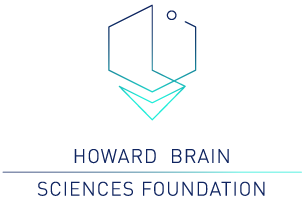In our last article on the Brain Blog, we introduced the July topic of nutrition. We discussed how balanced nutrition is core to the body and brain’s health, as well as the function of neurotransmitters and several nonprofit organizations devoted to combating hunger and insufficient nutrition. This week, we begin our more in-depth discussions of nutrition with how amino acids affect the brain.

Amino acids combine to create proteins and serve as the precursor to several neurotransmitters in the brain (MedLine Plus, 2020; Fernstrom, 1994). The body uses amino acids to digest, grow, and repair bodily tissue (MedLine Plus, 2020). Lastly, there are three broad categories of amino acids essential, nonessential, and conditional (MedLine Plus, 2020). As the body cannot produce essential amino acids, it must absorb them from food (MedLine Plus, 2020). The nine essential amino acids are histidine, isoleucine, leucine, lysine, methionine, phenylalanine, threonine, tryptophan, and valine (MedLine Plus, 2020). Nonessential amino acids are produced by the body and include alanine, arginine, asparagine, aspartic acid, cysteine, glutamic acid, glutamine, glycine, proline, serine, and tyrosine (MedLine Plus, 2020). Conditional amino acids are only produced by the body in times of stress and include arginine, cysteine, glutamine, tyrosine, glycine, ornithine, proline, and serine (MedLine Plus, 2020).
Two types of ingested amino acids can affect the brain, aromatic, and acidic amino acids (Fernstrom, 1994). Aromatic amino acids include tryptophan, tyrosine, and phenylalanine, and “are the biosynthetic precursors for the neurotransmitters serotonin, dopamine, and norepinephrine” (Fernstrom, 1994). Depending on the protein content of meals, what one eats can “directly modify [amino acid’s] conversion to neurotransmitters” (Fernstrom, 1994). Modifying neurotransmitters’ production also affects neurotransmitter’s release from neurons, thus altering brain function (Fernstrom, 1994). Tryptophan is the precursor to serotonin and melatonin, while “tyrosine and phenylalanine are the substrates for the neurotransmitters dopamine and norepinephrine” respectively (Fernstrom, 1994; PubChem, 2020). These amino acids can cause changes in sleep, appetite, sensitivity to noxious stimuli, pituitary hormone secretion, blood pressure, and mood (Fernstrom, 1994). For example, diets with higher levels of tryptophan have been correlated with the improved mood in patients with Affective Disorders (Lindseth, Helland, & Caspers, 2015).
Glutamate and aspartate are the two acidic amino acids and brain neurotransmitters (Fernstrom, 1994). However, glutamate and aspartate cannot readily access the brain from circulation or diet alone (Fernstrom, 1994). Unless consumed in “enormous amounts,” aspartate and glutamate ingestion does not modify brain function (Fernstrom, 1994). This distinction is significant as excessive glutamate or aspartate in the brain can be damaging (Fernstrom, 1994). For example, the Food and Drug Administration recognizes monosodium glutamate, a somewhat controversial food additive, safe for consumption, but would not recommend eating three grams or more without other food (Nutrition Center for Food Safety and Applied, 2020).
There are many other examples of the way the brain is affected by amino acids. In the case of Bulimia Nervosa (BN) patients, one hypothesis proposes that “bingeing behavior is precipitated by a reduction in serotonin (5-HT) activity in the brain” (Kaye et al., 2000). Reduced serotonin transmission stimulates food intake and has been generally found in women with BN (Kaye et al., 2000). In one study, women with BN who did not receive tryptophan doses had an “increased susceptibility to depression, mood [lability], and desire to overeat and purge,” thus suggesting that “women with BN are vulnerable to the mood lowering effects of tryptophan depletion” (Kaye et al., 2000).
Oral branch chain amino acids (BCAAs) have been researched as a treatment for “mania, motor malfunction, amyotrophic lateral sclerosis, and spinocerebral degeneration” (Institute of Medicine (US) Committee on Nutrition, Erdman, Oria, & Pillsbury, 2011)). Experts have also proposed amino acids as a treatment for Traumatic Brain Injuries (TBIs) (Institute of Medicine (US) Committee on Nutrition et al., 2011). On the one hand, excitotoxicity, damaging excessive stimulation by neurotransmitters, results in cellular damage post-TBI excitotoxicity (Institute of Medicine (US) Committee on Nutrition et al., 2011). Nevertheless, because BCAAs “also contribute to the synthesis of inhibitory neurotransmitters,” amino acids may help reduce damage to neural structures (Institute of Medicine (US) Committee on Nutrition et al., 2011).
Lastly, other examples of common amino acid treatments include 5-hydroxytryptophan as a treatment for depression, and L-DOPA as a treatment for Parkinson’s (Turner, Loftis & Blackwell, 2006; Kostrzewa, Nowak, Kostrzewa, Kostrzewa & Brus, 2005). For more information about the amino acids, you can also read more in Molecular Biology: A Very Short Introduction and the University of Arizona’s review of amino acids.
Written by Senia Hardwick
References
Divan, A., & Royds, J. (2016). Molecular biology: A very short introduction (First edition). Oxford University Press.
Fernstrom, J. D. (1994). Dietary amino acids and brain function. Journal of the American Dietetic Association, 94(1), 71–77. https://doi.org/10.1016/0002-8223(94)92045-1
Institute of Medicine (US) Committee on Nutrition, T., Erdman, J., Oria, M., & Pillsbury, L. (2011). Branched-chain amino acids. National Academies Press (US). https://www.ncbi.nlm.nih.gov/books/NBK209312/
Kaye, W. H., Gendall, K. A., Fernstrom, M. H., Fernstrom, J. D., McConaha, C. W., & Weltzin, T. E. (2000). Effects of acute tryptophan depletion on mood in bulimia nervosa. Biological Psychiatry, 47(2), 151–157. https://doi.org/10.1016/S0006-3223(99)00108-0
Kostrzewa, R. M., Nowak, P., Kostrzewa, J. P., Kostrzewa, R. A., & Brus, R. (2005). Peculiarities of L-DOPA treatment of Parkinson’s disease. Amino Acids, 28(2), 157–164. https://doi.org/10.1007/s00726-005-0162-4
Lindseth, G., Helland, B., & Caspers, J. (2015). The effects of dietary tryptophan on affective disorders. Archives of Psychiatric Nursing, 29(2), 102–107. https://doi.org/10.1016/j.apnu.2014.11.008
MedLine Plus. (2020). Amino acids: Medlineplus medical encyclopedia. MedLine Plus. https://medlineplus.gov/ency/article/002222.htm
Nutrition Center for Food Safety and Applied. (2020). Questions and answers on monosodium glutamate(Msg). FDA. https://www.fda.gov/food/food-additives-petitions/questions-and-answers-monosodium-glutamate-msg
PubChem. (2020). Tryptophan. National Library of Medicine National Center for Biotechnology Information. https://pubchem.ncbi.nlm.nih.gov/compound/6305
The Biology Project. (2003). Amino acids. The Biology Project. http://www.biology.arizona.edu/biochemistry/problem_sets/aa/aa.html
Turner, E. H., Loftis, J. M., & Blackwell, A. D. (2006). Serotonin a la carte: Supplementation with the serotonin precursor 5-hydroxytryptophan. Pharmacology & Therapeutics, 109(3), 325–338. https://doi.org/10.1016/j.pharmthera.2005.06.004
